Why Marine Mooring Bollards Are Important
Marine mooring bollards that are properly designed, installed, and kept contributing to safe, efficient, and reliable vessel mooring, which is essential for the smooth operation of marine operations.
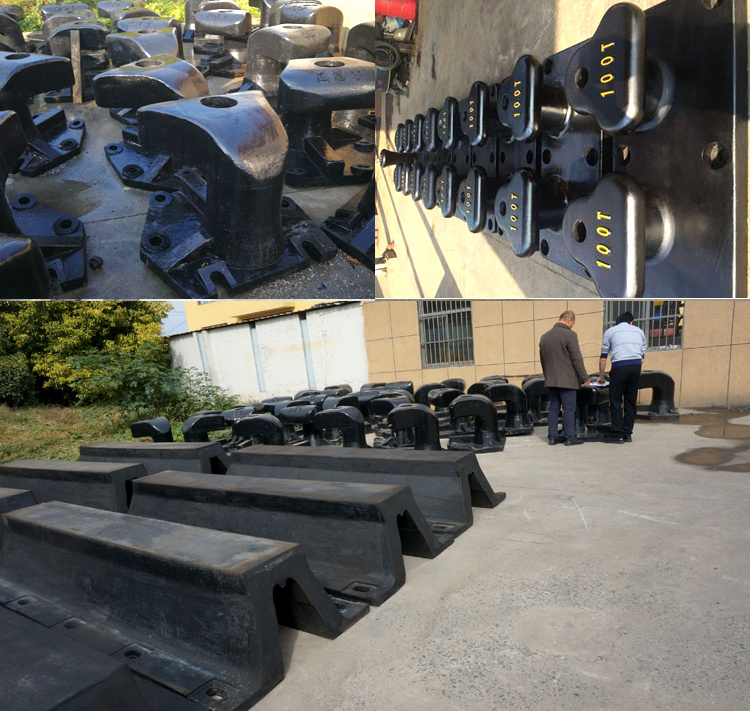
Different Materials Used In Marine Mooring Bollards
Depending on factors such as anticipated loads, environmental conditions, and durability requirements, marine mooring bollards can be manufactured from a variety of materials.
Steel
Steel is a popular material for marine mooring bollards due to its great strength, durability, and corrosion resistance. Steel bollards are usually made of cast or fabricated steel and can endure high loads as well as harsh environmental conditions. Steel bollards are frequently used in heavy-duty applications involving big vessels and heavy mooring loads.
Cast Iron
Another material used in the building of marine mooring bollards is cast iron. Cast iron bollards are well-known for their great load-carrying capacity and resistance to wear and tear.
Ductile Iron
Ductile iron, also known as nodular iron, is a type of cast iron with greater tensile strength and ductility than traditional cast iron. Ductile iron bollards have high strength, durability, and corrosion resistance, making them ideal for marine mooring uses. Ductile iron bollards are frequently used in mooring activities with heavy loads and harsh environmental conditions.
Composite Materials
Due to their lightweight, high strength, and corrosion-resistant properties, composite materials such as fibreglass-reinforced plastic (FRP) or fibre-reinforced polymer (FRP) are gaining favour in maritime mooring bollard construction. Composite bollards have several benefits, including lower maintenance, increased safety, and resistance to environmental degradation. They are frequently used in applications where weight reduction, ease of handling, and corrosion resistance are essential considerations.
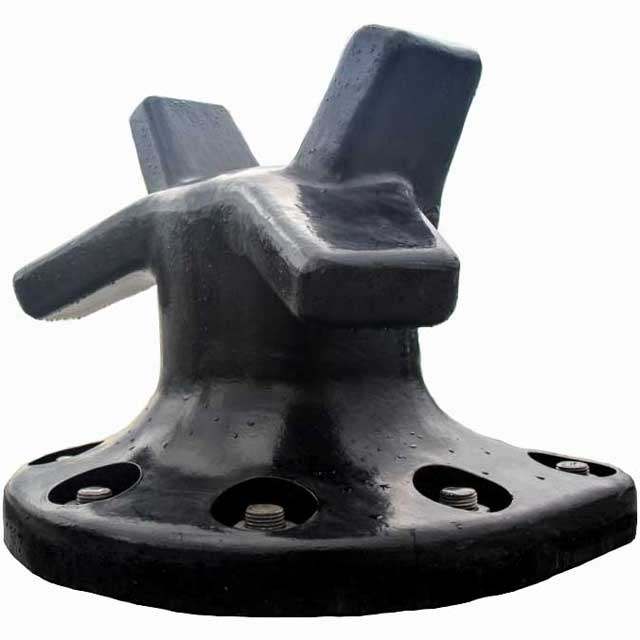
Functions of Marine Mooring Bollards
Safety
Marine mooring bollards are required for vessels to be safely moored to docks, piers, or other maritime structures. They offer a dependable method of securing vessels, stopping them from drifting or moving unintentionally, which can result in accidents, collisions, and harm to the vessels or marine structures. Mooring bollards that are properly designed, installed, and kept guarantee the safety of vessels, crew, and personnel operating in the vicinity.
Vessel Restraint
Marine mooring bollards are used to keep vessels from drifting or moving accidentally. They act as fixed points to which mooring lines or ropes are connected, stopping the vessel from drifting away or moving along the dock or pier.
Load Distribution
Marine mooring bollards spread mooring loads equally across the vessel’s structure, reducing stress concentrations and the possibility of damage to the vessel’s hull or deck. They aid in the distribution of loads placed on the vessel during mooring operations, reducing the risk of overloading and structural damage.
Shock Absorption
Marine mooring bollards also function as shock absorbers, absorbing impact pressures caused by vessel movement, waves, or wind loads. They provide a cushioning effect that aids in the reduction of the transmission of sudden loads to the vessel and mooring lines, safeguarding both the vessel and the mooring system from excessive forces.
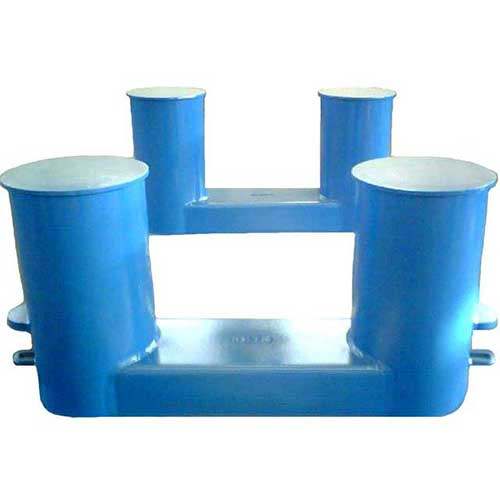
Flexibility
Marine bollards are adaptable to vessels of various sizes, types, and designs. They can be designed and installed to satisfy particular mooring needs, taking into account vessel size, mooring loads, environmental conditions, and operational requirements. This adaptability enables efficient and safe mooring procedures for a wide range of vessels, from small boats to big ships.
Quick Release Capability
Mooring bollards are intended to enable for the quick release of mooring lines in the event of an emergency or unforeseen occurrence. They are usually designed with features like horns or cleats that allow for quick securing and releasing of the mooring lines, which is an essential safety feature for vessel mooring operations.
Compliance with Regulations and Standards
Various international standards and regulations, such as ISO 3913 and PIANC guidelines, govern the design, construction, and upkeep of marine mooring bollards, ensuring that they meet industry standards for safety and performance. Compliance with these standards is critical for ensuring the dependability and effectiveness of mooring activities, as well as mitigating risks.
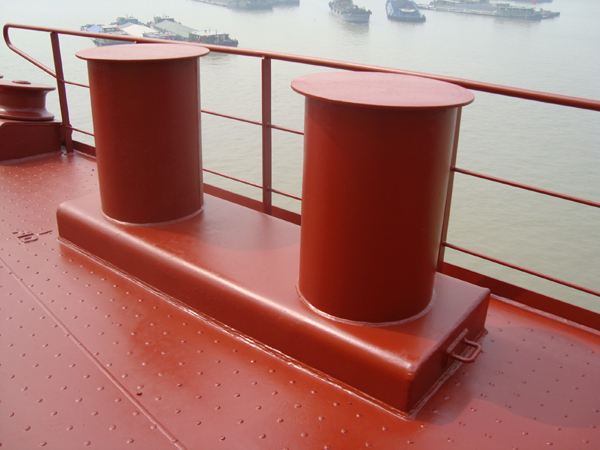
Maintenance of Marine Mooring Bollards
Marine mooring bollards must be properly maintained to guarantee their continued performance, durability, and safety.
Inspection
Marine mooring bollards should be visually inspected on a regular basis to detect indications of wear, corrosion, or damage. Inspect the bollard body, horns, studs, base plate and attachment points for cracks, deformation or other indications of damage that could impair performance. Inspect the mooring line connection spots, bolts, and nuts as well.
Cleaning
Regular cleaning of maritime mooring bollards is recommended to remove dirt, debris, and marine growth that can accumulate on the surface and impact the bollard’s performance or accelerate corrosion. To clean the bollards without causing damage, use appropriate cleaning techniques and tools such as brushes, water, and mild detergents.
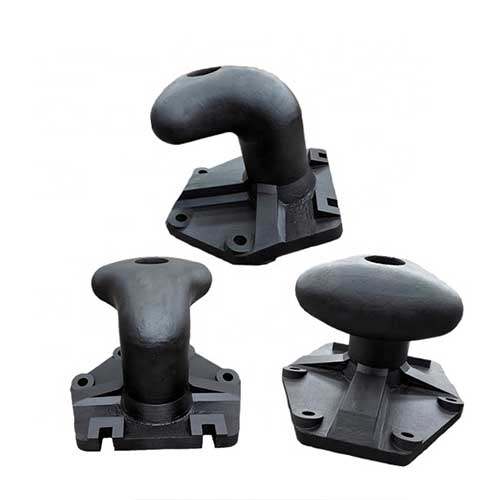
Corrosion Protection
Marine mooring bollards are prone to corrosion due to their exposure to harsh marine environments. Applying suitable corrosion protection measures, such as anti-corrosive coatings or galvanizing, can help to prolong the life and performance of the bollard. For corrosion protection, follow the manufacturer’s suggestions and industry best practices.
Lubrication
Proper lubrication of moving components, such as horns or studs, is essential for smooth operation and wear prevention. To keep the performance of the bollard, use suitable lubricants on moving parts and adhere to the manufacturer’s lubrication schedule.
Repair or Replacement
If any indications of wear, damage, or deformation are discovered during inspections, the affected components should be repaired or replaced as soon as possible. To maintain the integrity and performance of the bollard, damaged or worn components such as horns, studs or bolts should be repaired or replaced with appropriate replacements.
Compliance with Standards
Ensure that the mooring bollards are in accordance with relevant industry standards and regulations, such as ISO 3913 and PIANC guidelines, and that any suggested maintenance practices stated by the maker or relevant standards are followed.
Record-keeping
Maintain accurate documents of marine mooring bollard inspections, maintenance operations, and repairs or replacements. This aids in keeping note of maintenance history, identifying trends, and planning future maintenance activities.
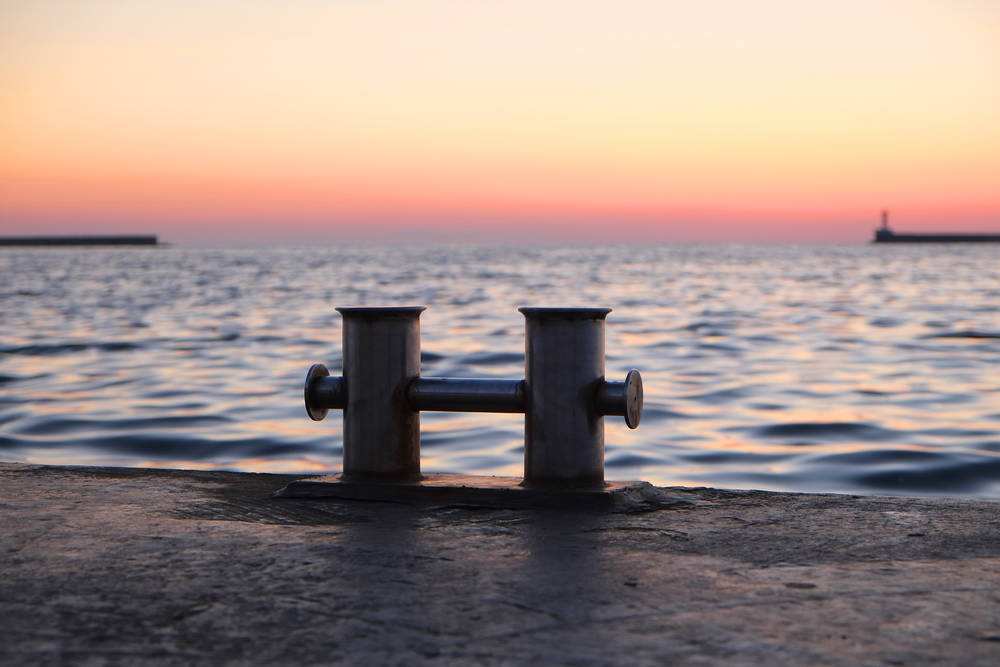
Summary
Marine mooring bollards play an important part in assuring the safe and efficient operation of vessels in ports, harbors, and other marine facilities. Inspections, cleaning, corrosion protection, lubrication, and timely repairs or replacements are all necessary to guarantee their ongoing performance, durability, and safety.


